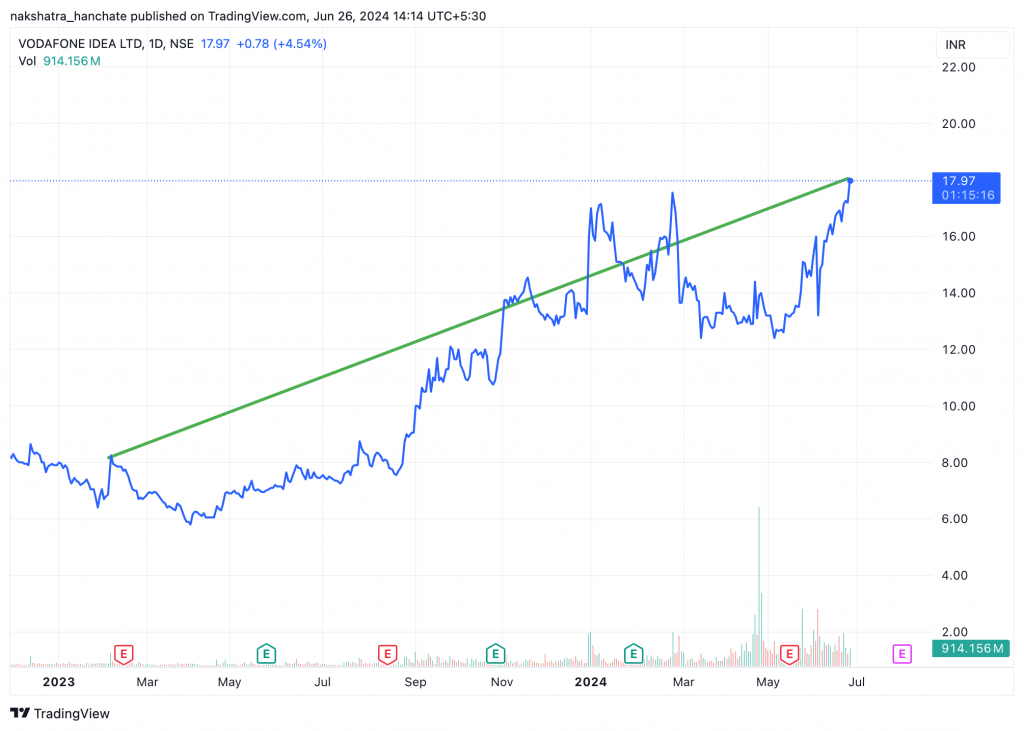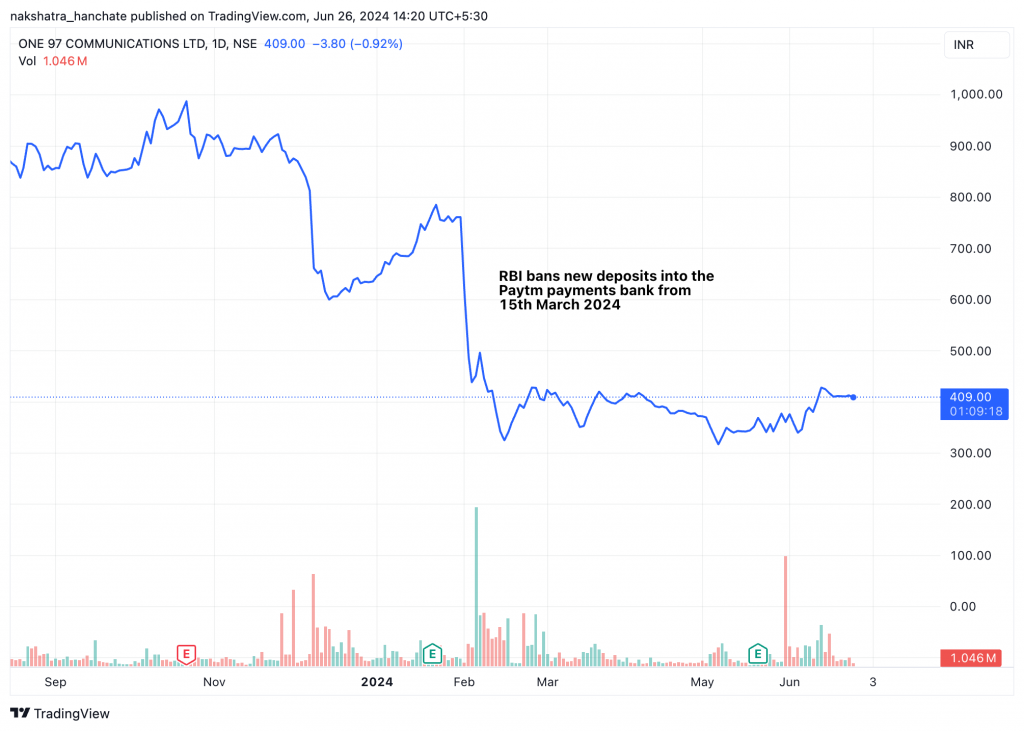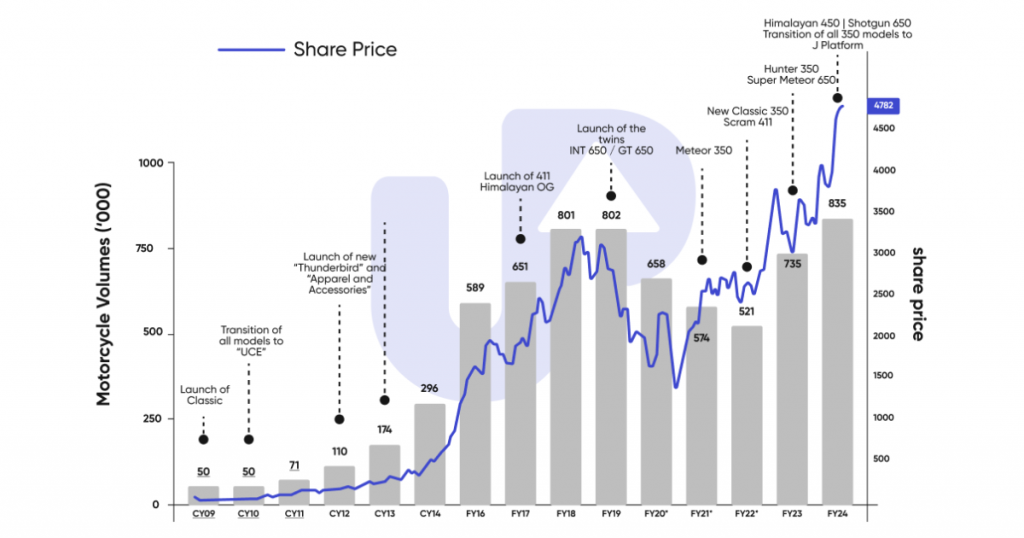Chapter 1: Introduction to Fundamental Analysis
How can you tell if a stock is worth its price? In this chapter, we will uncover how investors look beyond the stock price at its value to generate wealth in the long term. We will touch upon the concept of fundamental analysis and how to approach it.
"Price is what you pay, and value is what you get."
- Famed value investor Warren Buffett
The search for value makes a housewife, a businessman, a student, and a secretary an investor. Deep inside, everyone wants to convert ₹50,000 into ₹1 crore. But it requires time, patience, and an optimistic outlook.
Benjamin Graham, the father of value investing, said, “A stock is not just a ticker symbol or an electronic blip; it is an ownership interest in an actual business, with an underlying value that does not depend on its share price.”
Investors use what is known as fundamental analysis to identify this “underlying value,” i.e., to look at a stock beyond its price at its business and management quality.
What is Fundamental Analysis?
By definition, being “fundamental” means being the basic constituent of a system, a foundation without which the entire system will collapse. For a human being, water, air, and food are the “fundamentals” of life.
Similarly, cash inflows (through revenue, investment, capital) and cash outflows (expenses, debt, investing in the business) are the fundamentals of any business. When the cash flows in and out smoothly, the fundamentals of a business stay strong. Driving this cash flow is the business model of a company. A business model defines how a company makes money, which products or services it will sell, to whom, and how (marketing, branding, and distribution). The model also defines the expenses and how the company will raise money to cover these expenses.
Fundamental analysis is understanding the fundamentals or vitals of a business: mapping their historical trend and comparing them with peers, analyzing the factors affecting these vitals, and determining what management is doing to keep them healthy.
What are the fundamentals of a business?
Let’s start with the question at the core of all business activities: What is the main objective of doing business? The answer is quite straightforward: to make profits by offering some form of value. To do this, you need to focus on the three basic fundamentals of any business:
- Revenue, i.e., how a business makes money
- Net profit, i.e., how much money is it able to keep
- Cash flow, i.e., how much of this money is real

Any problems in these three fundamentals can shake the foundation of a company.
One of the biggest examples of this is the 2024 Paytm crisis, when the RBI stopped all new deposits into the Paytm Payments Bank on March 15, 2024. This restriction directly impacted Paytm’s revenue, sending the shares down, whereas rivals PhonePe and Airtel Payments Bank’s revenues surged as they poached Paytm’s customers.

Intrinsic Value
Intrinsic value is the underlying value of a stock that investors calculate based on what they perceive about the company’s future cash flow potential. When you determine the intrinsic value of a stock, you can compare it with the current stock price to determine if the stock is overvalued or undervalued by the market.
You can use these core fundamentals to arrive at an intrinsic value that you believe justifies the company’s worth. The intrinsic value is determined using fundamental analysis to forecast the company’s future cash flows.
Why does one need fundamental analysis?
Let’s take the example of Eicher Motors, the maker of the famous Royal Enfield bikes. Today, you would have a rugged bike if you had invested ₹55,000 in a Royal Enfield in 2004. But if you had invested the same amount in Eicher Motors shares instead, today you would have ₹1.5 crores – enough to buy 37 of the Super Meteor 650 bikes, Royal Enfield’s most expensive model in India!
What happened in 2004 that fundamental investors saw, but the market didn’t?
30-year-old Siddhartha Lal took over as COO of Eicher Motors when the stock was trading at ₹17.5 a share and made a difficult choice: to prune its 15 businesses, where it was a mediocre player, into just two businesses where it had the potential to be the market leader. At ₹17.5, the stock was actually trading at double the price it was trading two years ago (₹8.4 in January 2002).
This ₹17.5 is the price you would have paid in 2004 to get one-share ownership in a company that went from selling 50,000 bikes in 2009 to 835,000 in 2024.
Focus on business growth; stock price appreciation will follow
Siddhartha Lal’s vision was to be the master of one instead of a jack of all trades. He put the company’s focus and resources on improving the Enfield bikes. A passionate biker, he knew what the customer wanted and ensured his team knew it. Riding the Enfield with his team for hundreds of kilometers, he identified places for improvement and soon perfected the bike.
Royal Enfield offered neither in a market obsessed with mileage and fuel efficiency. What it did offer was a stature and legacy, and that too at a premium price. The company capitalized on this legacy. It took four years for the company to pick up sales momentum. The company’s fundamentals improved as production costs reduced and sales volumes surged.
It was only in 2009 that Eicher Motors’ stock began taking a vertical jump from ₹20.84 to over ₹3,000 in 2018—ten straight years of the rally! While the stock saw a rough patch between 2018 and 2020, its fundamentals remained strong, and it rallied to ₹4,700.

Siddharth Lal spent four years refining the product and manufacturing, enhancing the company’s value by focusing on its strengths. The ₹17.5 price might have looked high in 2004. However, a fundamental investor looked beyond the stock price at the business and the management, who were focused on long-term growth and generating shareholder value. Even today (2024), the company is focused on Royal Enfield and VE commercial vehicles, a partnership with Volvo to make trucks.
This doesn’t mean only premium brands generate high returns. It also depends on their business strategy and focus and whether the potential growth estimate seems achievable.
This is one of the many examples of how fundamental analysis can create wealth for those who remain invested.
Fundamental analysis is all about knowing the ‘Why?’: Why do you want to invest in this sector or this stock? Why do you think your thesis will play out?
Technical Analysis vs Fundamental Analysis:
In the stock market, there are two types of people: Traders and Investors.
Traders use technical analysis to make a trade. They enter the market to buy low and sell high to make quick profits. They are on top of all the updates and deeply understand every asset class – gold, equity, currency, commodity – and the market dynamics.
They use a combination of technical analysis, number crunching, analyzing huge amounts of data sets, identifying chart patterns, and implementing market strategies. In technical analysis, a stock is just a ticker trading on the stock exchange, having price momentum and chart patterns. Traders need behavioral qualities like risk-taking, analytical thinking, and number-based decision-making to make a sound trade.
Then, some investors are in the market to generate wealth over the long term. They take time to find the stocks they feel confident about and stay invested for several years. News and events do not affect them as long as the company has what it takes to grow.
Traders and investors react to a situation differently. Take the Union Budget, which was announced by the government on February 1 every year, for instance.
Ashok is a trader and believes the Budget will focus more on defense. Hence, he buys defense stocks a week ahead of the budget and sells them after the budget is announced. Similarly, he buys space stocks before the Chandrayaan-3 launch and sells them after a successful launch. Here, Ashok’s objective is to generate returns in the short term. Technical analysis can help you time the market and grab opportunities to make quick returns on some events.
If your objective is to convert ₹50,000 into ₹1 crore, technical analysis alone won’t suffice. You also need to make long-term investments. Let your money spend time in the market. Long-term refers to a period of 5 years and above. A lot can happen in these 5 years. Hence, you need fundamental analysis to ensure the company stays relevant and grows long-term.
The Mindset of a Fundamental Investor
Anyone with basic business knowledge can become a fundamental investor. Warren Buffett’s 2023 letter to shareholders defines a fundamental investor in the most basic form. He gave the example of his sister Bertie, who isn’t an economic expert, an accountant, or even an MBA in Finance. But she is a person with common sense who understands many accounting terms, reads the newspaper daily, and observes human behavior. She can tell who is selling and who she can trust – all necessary traits for fundamental analysis.
There is a misconception that fundamental analysis needs data and high-level mathematical skills. A true fundamental analyst needs a business mindset. They need to think of a stock as their own company and understand what’s best for its growth. The math in the analysis is simple addition, subtraction, multiplication, and division. All you have to do is identify whether you are making a profit.
Though we will dive deeper into the concepts of fundamental analysis in further chapters, here’s how great investors do it:
- Know how the company earns money – can it continue to earn money 10 years later?
- Know how to read books of account – to build practical expectations of its future earnings and review the books to compare actual numbers with your expectations.
- Willing to read and study – they are willing to understand the terms, logic, subjects, and skills. They read things beyond finance and never stop learning.
- Can differentiate between ‘information’ and ‘influence’ – Fundamental investors have their own thoughts and opinions and aren’t easily influenced by what others say.
- Are open to change – The future is unpredictable. Facts can change and one should change with them and adjust their investments accordingly.
The ‘funda’ of Fundamental Analysis:
In a nutshell, fundamental analysis is all about identifying and giving preference to a company’s business over the stock price. An investment decision based on sound and informed fundamental analysis can give you confidence to stay invested over the long term and generate wealth.
In this guide, we will learn how to do fundamental analysis from scratch, from studying the business and how it earns money to analyzing a company’s qualitative and quantitative aspects.
In Summary:
- A stock is not just a ticker symbol or an electronic blip but an ownership interest in an actual business.
- Fundamental analysis is understanding these three fundamentals: Revenue, Net Profit, and Cash Flow.
- To perform fundamental analysis, you should know about the company, stay informed about its happenings, and make sense of the fundamental figures.
- Traders use technical analysis to make short-term gains based on news and events. Investors use fundamental analysis to understand the company and invest to generate wealth in the long term.
- Fundamental analysis doesn’t need you to know advanced maths or be a CA. You should be able to read and interpret a company’s financial statements and other qualitative aspects to understand if it can sustain and grow in the long term.